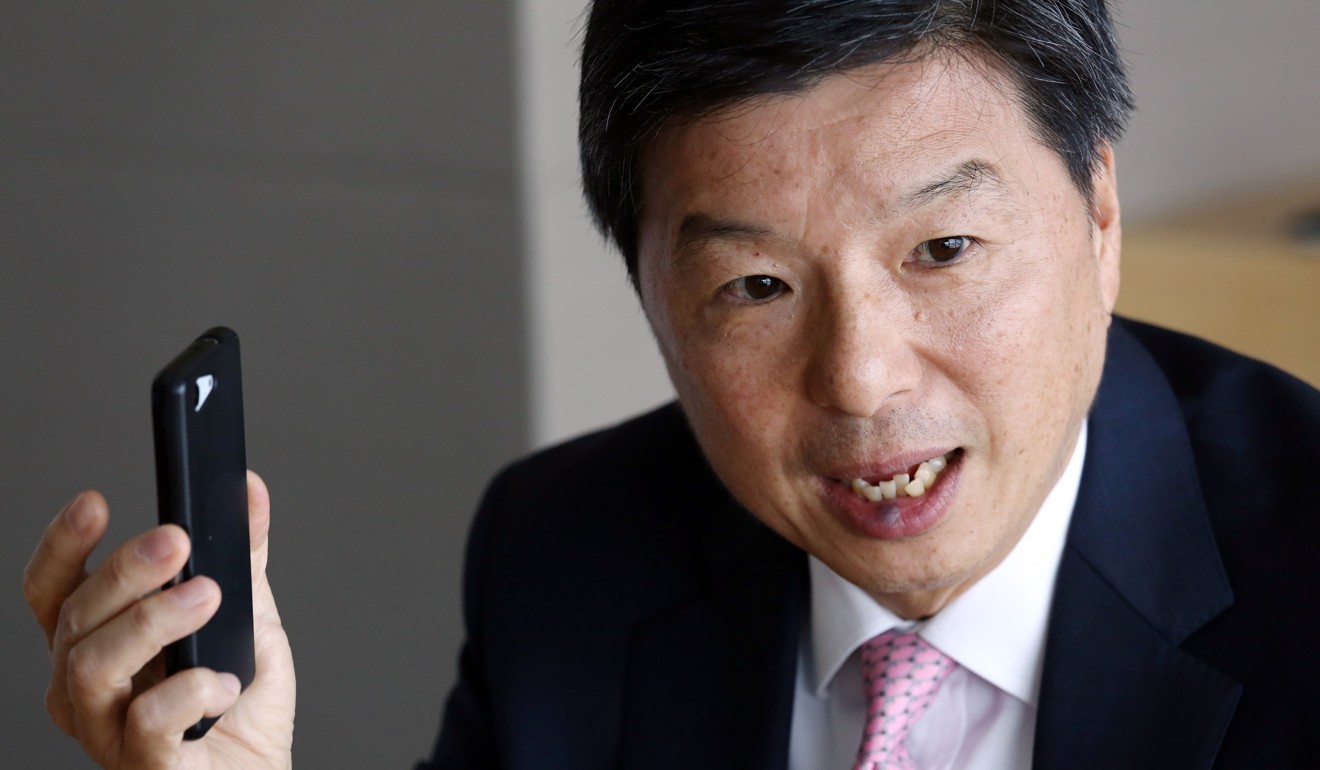
Octopus to try again to get Hong Kong’s 40,000 taxi drivers on board following moves by Alipay and WeChat Pay
Tailor-made app that acts as card reader to be rolled out for drivers in April amid efforts to get them off cash payments
Octopus will launch another attempt to capture Hong Kong’s e-payment market for taxi rides following moves by two major mainland Chinese players to break into the industry.
Octopus chief executive Sunny Cheung Yiu-tong on Monday said the company, which issues the contactless cards that already account for the bulk of e-payments in the city, would launch a tailor-made app for taxi drivers in April.
The app will feature a card reader that can be used by passengers to pay fares on board, marking the second time it is reaching out to taxi drivers. In November it made available a QR code service.
Cheung said he hoped the new payment method, which would come with some “undisclosed incentives”, would break new ground amid entrenched payment habits among Hong Kong’s 40,000 taxi drivers, many of whom only accept cash.
Octopus has tried for years to push the use of its plastic contactless cards, which were launched in 1997 and are widely accepted across the city for small payments.

“We will battle again for the taxi market,” Cheung said. “It is among our top priorities this year.”
The 18,163 taxis in Hong Kong were the sole form of public transport accepting only cash until late last year, when Ant Financial’s Alipay, Tencent’s WeChat Pay HK and Octopus rolled out QR code payment services.
Hongkongers will soon be able to use phones in place of Octopus cards
Passengers with an Octopus app on an Android smartphone can already use their handset to scan the QR code taxi drivers provide and make a payment. But those using Apple’s iPhone cannot because the device does not support phone-based transaction technology known as near-field communication.
However, from April these passengers will be able to tap their Octopus cards on a taxi driver’s phone, which will serve as a card reader through the tailor-made app. Passengers will also have an option to pay extra as a tip.

Ng Kwan-shing, chairman of the Taxi Dealers and Owners Association, said e-payment was a sweeping and unavoidable trend.
He said Alipay and WeChat Pay had aggressively wooed drivers with cash rebates and other incentives, but the two firms were not yet very popular with local passengers.
Hong Kong e-payment operator Octopus launches QR code service, aiming to get city’s 40,000 taxi drivers off cash
“Octopus has an edge. It is so widely used in Hong Kong,” Ng said. “But whether drivers or passengers will choose to use Octopus or others depends on what incentives it offers.”
Some taxi unions said in December that Alipay had targeted having 1,000 taxis on board as a start, while WeChat Pay had been more ambitious, banking on about half of the taxi market in three to six months.
Alipay on Monday declined to offer any update on its services. It is a unit of Ant Financial Services Group, an affiliate of Alibaba Group, which owns the South China Morning Post.

Norman Tam, general manager of Tencent’s international business group, said more than 1,000 taxis were using WeChat Pay following its Hong Kong launch in December.
“The overall growth momentum is very encouraging,” he said. “It will become more broadly used as a taxi payment method.”
Cheung, meanwhile, said taxi drivers would be more confident going electronic come September, when the city’s de facto central bank, the Hong Kong Monetary Authority, is due to roll out real-time financial infrastructure for the city.
“They used to be concerned that they wouldn’t get back their revenues in at least a day or longer,” he said.
QR code wars: Hong Kong’s Octopus targets shoe shiners with e-payment system
Settling e-payments currently takes one working day.
The Monetary Authority’s new system, which will connect banks with stored-value facility operators, will allow for real-time credit transfers, direct debit services and peer-to-peer fund transfers. The authority is due to reveal details on Tuesday.

